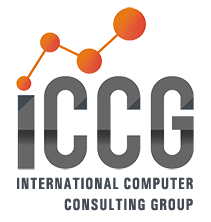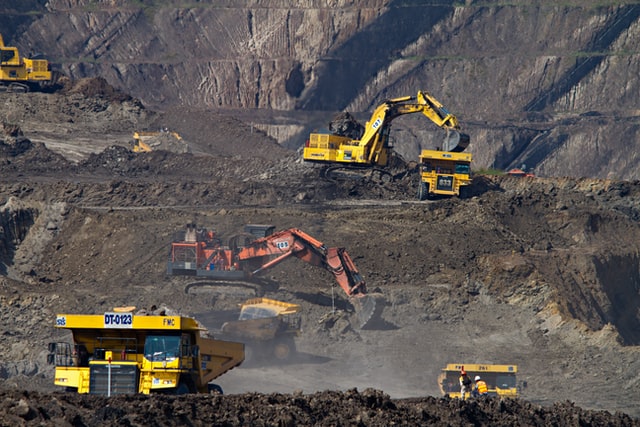Equipment companies used to compete mostly on product and price. But that was before customers could get whatever they needed with just a click of a button. With reduced differentiation and diminishing sales margins, equipment companies are shifting the focus beyond product and price to what problems they can solve for their customers. Today’s equipment companies compete on service.
Which means that one of the biggest challenges equipment OEMs, dealers, rental, and service organizations face today is how to increase customer service levels. It’s this push for finding new and better ways to serve customer needs that are at the core of many of the key issues that are impacting the equipment industry today.
Read on for a deep dive into the top issues facing the equipment industry and how addressing these issues can help companies better compete on customer service.
1. Shifting customer behavior
Some debate exists as to whether there’s currently an overall trend of companies increasing or decreasing their capital expenditures. While companies can often benefit from the amortization and depreciation of equipment purchases, those companies might not be willing to make large investments when it’s difficult to predict the long-term need for the equipment. Or they simply may not have the cash on hand. And when a company has only a short-term need for equipment, the operating expense of renting or leasing the equipment makes much more financial sense.
Regardless of which way capital expenditures are trending today, this trend can easily reverse course quickly and unexpectedly. Therefore, equipment companies should make sure they have the flexibility to meet customer needs via sales, rental, and lease—and not rely on just a single charging model. In fact, alternative charging models, such as output and outcome-based billing are becoming increasingly common. For instance, a customer might only pay for thenumber of hours a piece of equipment is in operation. In this scenario, the equipment company is providing the equipment as a service.
Output and outcome-based billing are made possible in large part by the existence of smart equipment. Smart sensors, meters, and other Internet of Things (IoT) devices embedded into or installed on equipment can send information back to the equipment provider about the usage and condition of the equipment. Of course, this information needn’t remain in the exclusive domain of the equipment provider. Equipment companies can even utilize artificial intelligence (AI) to analyze this data to help customers optimize their usage of the equipment—perhaps to improve productivity or lower energy costs.
2. Circular economy
The equipment industry has been finding ways to reuse products and components for years. Buy what initially started as a way to get longer life out of existing products and components and reduce manufacturing costs, has grown into a global business that Accenture projects to be a $4.5 trillion business by 20301. In fact, the business practice has even earned its own economic model, called the “circular economy.”
Tessa Vlaanderen (founder and principal consultant of the Circular Futures consulting group and think tank) suggests that the circular economy can be broken down into five key “recovery strategies”:
■ Direct reuse
■ Repair
■ Refurbishment
■ Remanufacturing
■ Recycling
For the equipment industry in particular, remanufacturing is the most popular recovery strategy. Vlaanderen explains this is because “only remanufacturing assures high quality and consistency… it maximizes value generation for consumer and business, and therefore of overall resource productivity.”
Not only do businesses and customers come out winners with longer product lifespans and reduced costs, so does the environment with reduced waste. Fewer products and components wind up in landfills and less raw resources and energy are needed in remanufacturing vs. manufacturing. Beyond meeting regulatory requirements, exercising environmental responsibility can be appealing to conscientious customers, thus making those companies that participate more attractive to do business with.
To reap the benefits of a circular economy strategy, an organization must first adjust its product development approach away from a linear economy—where a product or component’s end-of-life destination is the scrapheap. Instead, products and components need to be designed for eventual reuse.
3. Complex supply chain
One of the most challenging aspects of the equipment industry is a multi-echelon supply chain that touches OEMs, distributors, rental, sales, aftermarket, and service. Manufacturers in particular, not only must source raw materials for configure-to-order (CTO), manufacture-to-order (MTO), and assembly-to-order (ATO) operations, they also need to ensure the right materials are in the right place at the right time across multiple co-manufacturers.
And virtually all sectors of the equipment industry—whether it’s manufacturing, dealers, rental, aftermarket, or service—must manage both forward and reverse logistics. Components for repair and remanufacture, such as engine “cores,” are heading out, while replacement components are coming in. Making things even more complex, these components are made up of slow-moving, high-value components (also known as “long tail” parts) and fast-moving, low-value components—both with very intermittent demand patterns. On top of this, rental companies must also contend with equipment coming off rental contracts that then either re-enters the supply chain for reuse as a whole piece of equipment or is earmarked, either in parts or whole, for remanufacture or reuse.
4. Lifecycle profitability
One of the equipment industry’s responses to increasingly tighter margins has been to seek out additional income from aftermarket services, such as maintenance, repair, parts, and remanufacturing. According to McKinsey, “the appeal of this strategy is simple: services provide stable revenue—and often higher margins—than sales of new equipment.” In fact, McKinsey reports that aftermarket services bring in 25% earnings-before-interest-and-taxes (EBIT), as opposed to just 10% for new equipment sales.
Every event and transaction that takes place between the equipment company and the customer on a piece of equipment—from initial quote to delivery to service to scrap—contribute to estimating the equipment’s lifecycle profitability. Managing and making sense of all of this data can be challenging—especially when factoring components that can potentially go through several rounds of reuse. Calculating equipment lifecycle profitability is a predictive process that utilizes AI and machine learning to analyze historical data from similar equipment, other customers, and forecasting models.
5. Service innovation
While aftermarket service might be more profitable than sales, it’s important to note that different levels of maintenance offer different levels of benefits to customers, along with different levels of profits margins for the equipment companies.
The most basic level of service is corrective maintenance—if it breaks, fix it. The next step up is preventative maintenance, where historical knowledge and basic engineering principles dictate when maintenance intervals are scheduled for components and systems.
After that comes condition-based maintenance, which uses smart sensors and other feedback technologies to monitor the health of equipment. Used correctly, condition-based maintenance can catch small problems before they become much bigger problems.
If a service organization were to analyze the historical data coming from the smart sensors in multiple, similar pieces of equipment, the organization could take service even a step farther with predictive maintenance. This method analyzes the actual performance and working environment of equipment over time and applies forecasting techniques to the data to predict outcomes. The goal here is to try to stop problems before they become problems.
Digital transformation
Many equipment companies don’t have the business systems, automations, workflows, and processes in place to support these new ways of doing business. Business systems that were implemented years (and often decades) ago can no longer support today’s complex demands.
Whether its keeping up with shifting customer behavior, reaping the benefits of the circular economy, managing a complex supply chain, improving lifecycle profitability, or innovating service, these demands all rely on utilizing modern technology. It’s this digital transformation of the way the equipment industry operates that can open the door to differentiation—allowing equipment companies to rethink approaches and create new data-driven ways to deliver and elevate services and the customer experience.
Learn more about how ICCG helps our Equipment Rental customers. Questions about how ICCG can help you? Let us know here.


